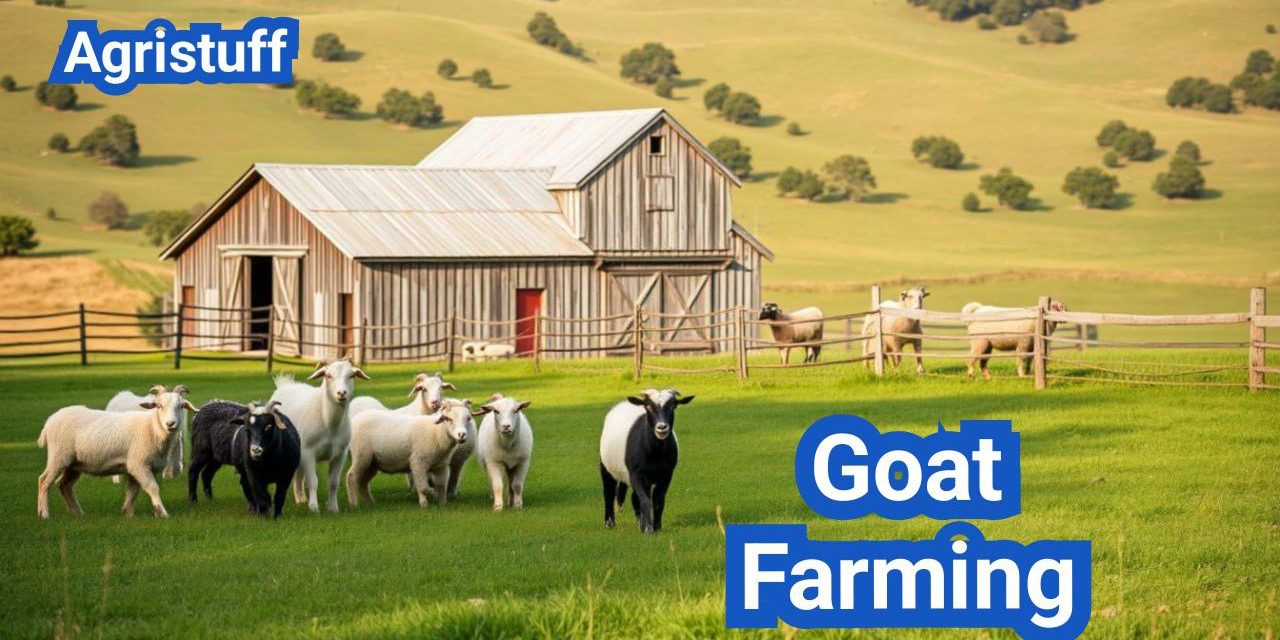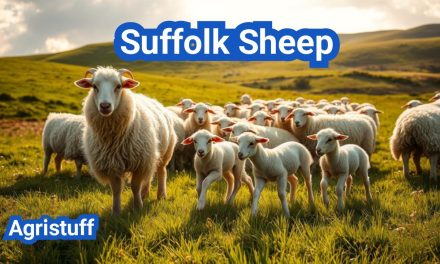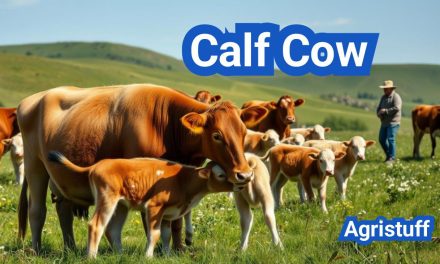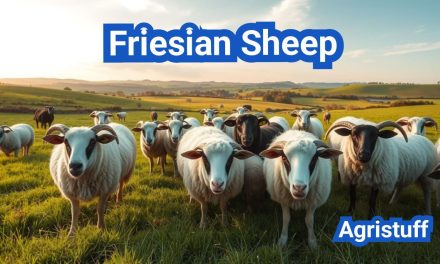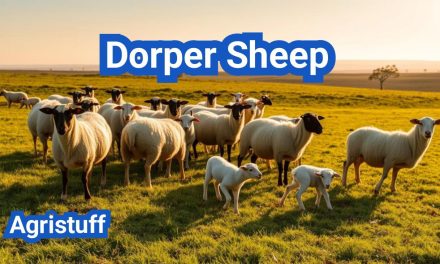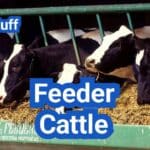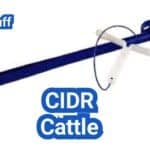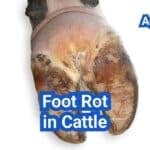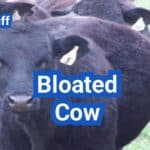For those looking to venture into a profitable and rewarding agricultural pursuit, goat farming offers a versatile and exciting opportunity. With the potential to produce milk, meat, fiber, or simply enjoy the companionship of these fascinating animals, goat farming is an attractive option for many.
Whether you’re a seasoned farmer or just starting out, understanding the basics of goat farming is essential. This guide will walk you through the key aspects of getting started, including breeds and setup considerations.
Key Takeaways
- Understanding the benefits and versatility of goat farming
- Learning about different goat breeds and their uses
- Gaining insights into setting up a successful goat farm
- Discovering tips for beginner goat farmers
- Exploring the potential for profitability in goat farming
Understanding the Basics of Goat Farming
Understanding goat farming is crucial for maximizing its potential benefits, from dairy production to land management. Goat farming has become an attractive option for many farmers due to its diverse products, small space requirements, high reproductive rate, and the hardiness of goats.
Why Goat Farming is Growing in Popularity
Goat farming is gaining popularity worldwide due to its versatility and the growing demand for goat products. The benefits of goat farming include the production of milk, meat, and fiber, as well as the use of goats for land management through grazing.
Diverse Products: Goats provide a variety of products, including milk for dairy products, meat for consumption, and fiber for clothing. This diversity allows farmers to tap into multiple markets.
“Goats are incredibly versatile animals, providing not just milk and meat but also serving as effective land managers through their grazing activities.” – Expert in Sustainable Agriculture
The Different Types of Goat Farming Operations
Goat farming operations can be categorized based on their primary purpose: dairy, meat, or fiber production, or a combination thereof. Understanding the different types is essential for deciding which operation best suits your resources and market demand.
- Dairy goat farming focuses on milk production for cheese, butter, and other dairy products.
- Meat goat farming is centered on raising goats for meat, a significant market in many cultures.
- Fiber goat farming involves breeding goats for their fiber, used in producing clothing and textiles.
| Type of Goat Farming | Primary Product | Market Demand |
|---|---|---|
| Dairy | Milk | High for dairy products |
| Meat | Meat | Significant in various cultures |
| Fiber | Fiber | Niche but growing |
Key Benefits of Raising Goats
Raising goats offers several key benefits, including their high reproductive rate, hardiness, and the relatively low initial investment required compared to other livestock.
Hardiness and Adaptability: Goats are known for their ability to thrive in various conditions, making them suitable for different climates and terrains.
The table below summarizes the key benefits:
| Benefit | Description |
|---|---|
| High Reproductive Rate | Goats can breed throughout the year, allowing for multiple kidding cycles. |
| Hardiness | Goats are resilient and can adapt to various environmental conditions. |
| Low Initial Investment | Compared to other livestock, the initial cost for starting a goat farm can be relatively low. |
Essential Guide to Goat Farming for Beginners

As a beginner in goat farming, it’s crucial to lay a strong foundation to ensure the success of your farm. Goat farming for beginners is an exciting venture that requires careful planning, a thorough understanding of the basics, and a well-executed strategy.
First Steps for New Goat Farmers
For new goat farmers, the journey begins with understanding the fundamentals of goat farming. This includes selecting the right breed for your farm, setting up appropriate housing, and familiarizing yourself with the nutritional needs of goats.
- Research and Planning: Start by researching different goat breeds and their specific needs. Planning is key to a successful goat farming operation.
- Setting Up Infrastructure: Ensure you have the right housing and fencing to keep your goats safe and healthy.
- Understanding Goat Nutrition: Learn about the dietary needs of goats and how to provide them with a balanced diet.
Common Beginner Mistakes to Avoid
New goat farmers often make mistakes that can be costly. Being aware of these common pitfalls can help you avoid them.
- Inadequate Fencing: Goats are notorious escape artists. Ensure your fencing is sturdy and high enough to prevent them from getting out.
- Poor Nutrition: Providing a balanced diet is crucial. Avoid overfeeding or underfeeding your goats.
- Lack of Veterinary Care: Regular veterinary check-ups are essential to maintain the health of your goats.
Timeline for Starting Your Goat Farm
Starting a goat farm requires a timeline to ensure everything is in place before bringing home your goats.
- Month 1-3: Research and planning, including selecting breeds and designing your farm infrastructure.
- Month 4-6: Setting up housing, fencing, and acquiring necessary equipment.
- Month 7: Bringing home your first goats and starting your farming operation.
By following these steps and avoiding common mistakes, you can set yourself up for success in goat farming. Remember, starting a goat farm is just the beginning; ongoing management and improvement are key to a thriving agricultural business.
Top Goat Breeds for Different Farming Purposes
Selecting the right goat breed is crucial for the success of your farming operation, whether you’re focusing on dairy, meat, or a combination of both. Different breeds are suited to different purposes, and understanding these differences is key to achieving your farming goals.
Dairy Goat Breeds
Dairy goat breeds are renowned for their milk production capabilities. Breeds like the Alpine, Nubian, and LaMancha are popular among dairy farmers due to their high milk yield and quality.
- Alpine: Known for their robust milk production and adaptability to various climates.
- Nubian: Recognized for their rich, creamy milk and friendly disposition.
- LaMancha: Distinguished by their high milk production and unique ear structure.
Meat Goat Breeds
Meat goat breeds are bred specifically for their meat production qualities. The Boer, Kiko, and Spanish breeds are among the most popular for meat production.
- Boer: Prized for their fast growth rate and high-quality meat.
- Kiko: Valued for their hardiness and resistance to parasites.
- Spanish: Known for their adaptability and lean meat.
Dual-Purpose Goat Breeds
Dual-purpose goat breeds offer the advantage of both milk and meat production, making them a versatile choice for farmers. These breeds can provide a steady income stream through the sale of both dairy products and meat.
Miniature and Pygmy Goats for Small Farms
Miniature and Pygmy goats are ideal for small farms due to their compact size and lower maintenance requirements. They can be used for a variety of purposes, including milk production, meat, or simply as pets.
By choosing the right breed for your farming needs, you can optimize your operation’s efficiency and profitability. Whether you’re focusing on dairy, meat, or a dual-purpose approach, there’s a goat breed suited to your goals.
Creating a Profitable Goat Farming Business Plan

A well-structured business plan is the backbone of any successful goat farming operation. It serves as a roadmap, guiding farmers through the complexities of establishing and maintaining a profitable agricultural venture.
Market Research and Identifying Your Niche
Conducting thorough market research is essential to understanding the demand for goat products in your area. This involves analyzing consumer preferences, identifying competitors, and determining the market size. By doing so, you can identify your niche, whether it’s dairy, meat, or fiber production.
For instance, if you decide to focus on dairy goat farming, you’ll need to research the demand for goat milk and cheese in your local market. This will help you determine the viability of your business and make informed decisions about production levels.
Financial Projections and Startup Costs
Creating detailed financial projections is crucial for securing funding and managing your goat farm’s finances effectively. This includes estimating startup costs, such as land acquisition, infrastructure development, and initial livestock purchases.
| Expense Category | Estimated Cost |
|---|---|
| Land Acquisition | $10,000 |
| Infrastructure Development | $15,000 |
| Initial Livestock Purchases | $8,000 |
| Total Startup Costs | $33,000 |
Marketing Strategies for Goat Products
Developing effective marketing strategies is vital for selling your goat products and generating revenue. This may involve creating a brand identity, establishing an online presence, and networking with potential customers.
- Develop a brand identity that reflects your farm’s values and unique selling proposition.
- Establish an online presence through social media and a dedicated website.
- Network with potential customers, such as local restaurants and specialty food stores.
Securing Funding and Resources
Securing funding is often a significant challenge for new goat farmers. You may need to explore various funding options, such as loans, grants, and investors. Additionally, you’ll need to identify resources, such as equipment suppliers and veterinary services, to support your operation.
By following these steps and creating a comprehensive business plan, you can establish a profitable goat farming operation that meets the demands of your target market.
Setting Up Your Goat Farm Infrastructure
Setting up a goat farm involves more than just acquiring the animals; it requires a well-thought-out infrastructure. Proper infrastructure is essential for the health and productivity of your goats, as well as for the overall success of your farming operation.
Land Requirements and Considerations
The first step in setting up your goat farm is to assess your land. Goats require adequate space to roam and graze. The amount of land needed can vary depending on the breed, size, and number of goats you plan to raise. A general rule of thumb is to provide at least 1/4 acre per goat, but this can vary based on the quality of the pasture and the management practices in place.
Key considerations for land include:
- Topography: Goats prefer hilly or mountainous terrain where they can climb and play.
- Vegetation: A mix of grasses, shrubs, and trees is ideal for providing a varied diet and keeping goats engaged.
- Water availability: Access to clean water is crucial. Consider the proximity of a water source when evaluating your land.
Housing and Shelter Options
Goats need shelter to protect them from extreme weather conditions such as heavy rain, intense sunlight, and cold temperatures. The type of housing you choose will depend on your climate and the specific needs of your goats.
Options for housing include:
- Barns: Traditional barns can provide excellent shelter and can be adapted for goat farming.
- Sheds: Simple sheds can offer adequate protection from the elements.
- Hoop houses: These are cost-effective and can provide a healthy environment for goats.
Fencing Solutions for Goat Containment
Fencing is a critical component of goat farming, as goats are notorious for their ability to escape. A well-designed fencing system is essential to keep your goats safe and contained.
Fencing considerations:
| Fencing Type | Description | Cost |
|---|---|---|
| High-Tensile Fencing | Durable and effective for containing goats. | Moderate to High |
| Net Wire Fencing | Flexible and easy to install, suitable for rotational grazing. | Moderate |
| Electric Fencing | Effective deterrent against predators and escape artists. | Low to Moderate |
Essential Equipment and Supplies
In addition to land, housing, and fencing, there are several pieces of essential equipment and supplies you’ll need to get started with goat farming.
Key equipment includes:
- Feeding troughs and buckets
- Watering systems
- Milking equipment (if you’re raising dairy goats)
- Health supplies (vaccinations, medications, etc.)
Sustainable Practices in Modern Goat Farming

Modern goat farming is shifting towards more sustainable methods, incorporating techniques like rotational grazing and organic farming. This shift is crucial for reducing the environmental impact of farming and ensuring the long-term viability of goat farming operations.
Rotational Grazing Techniques
Rotational grazing is a key sustainable practice in goat farming. It involves moving goats to different grazing areas to prevent overgrazing and allow pastures to recover. This technique not only improves pasture health but also reduces the risk of parasite buildup.
Benefits of Rotational Grazing:
- Increased pasture productivity
- Improved goat health
- Enhanced biodiversity
- Reduced soil erosion
Organic Goat Farming Methods
Organic goat farming involves raising goats without the use of synthetic fertilizers, pesticides, or genetically modified organisms (GMOs). This approach promotes ecological balance and conserves biodiversity.
Key Principles of Organic Goat Farming:
- Use of natural feed and supplements
- Avoidance of chemical pesticides and fertilizers
- Promotion of animal welfare
Waste Management and Composting
Effective waste management is critical in goat farming. Composting goat manure can provide a valuable nutrient-rich fertilizer for pastures, reducing the need for synthetic fertilizers.
| Waste Management Strategy | Benefits |
|---|---|
| Composting | Produces nutrient-rich fertilizer, reduces waste |
| Manure Spreading | Improves soil fertility, reduces fertilizer costs |
Reducing Environmental Impact
Goat farmers can reduce their environmental impact by implementing sustainable practices such as rotational grazing, organic farming, and effective waste management. These practices not only benefit the environment but also contribute to the long-term sustainability of the farm.
Strategies for Reducing Environmental Impact:
- Implement rotational grazing to prevent overgrazing
- Adopt organic farming methods to reduce chemical use
- Use composting to manage waste effectively
Goat Nutrition and Feeding Guidelines

A well-balanced diet is essential for the overall health and productivity of goats. Providing the right nutrients ensures that goats grow, reproduce, and produce milk or meat efficiently.
Basic Nutritional Requirements
Goats require a diet rich in fiber, moderate in energy, and adequate in protein, vitamins, and minerals. The basic nutritional requirements include:
- High-quality hay or pasture for fiber
- Grain or concentrates for energy and protein
- Mineral supplements to fill any nutritional gaps
- Clean, fresh water at all times
The nutritional needs can vary based on factors such as age, breed, and the goat’s purpose (dairy, meat, or fiber production).
Pasture Management for Goats
Effective pasture management is crucial for maintaining healthy goats and maximizing the use of grazing land. Techniques include:
- Rotational grazing to prevent overgrazing and maintain pasture health
- Monitoring pasture quality and quantity
- Managing stocking rates to avoid overloading the pasture
Rotational grazing not only helps in maintaining the quality of the pasture but also aids in parasite control.
Supplemental Feeding Strategies
Supplemental feeding is necessary when pasture alone cannot meet the nutritional demands of goats. Strategies include:
- Providing grain or concentrates during periods of low pasture quality or quantity
- Using nutritional supplements to address specific deficiencies
- Adjusting feeding levels based on the goat’s production stage
| Nutritional Element | Importance | Sources |
|---|---|---|
| Protein | Essential for growth and production | Grain, legume hay |
| Energy | Critical for metabolic processes | Grain, high-quality hay |
| Minerals | Vital for overall health | Mineral supplements, certain feeds |
Water Requirements and Delivery Systems
Access to clean, fresh water is vital for goat health. Water requirements vary based on factors like climate, activity level, and production stage.
Effective water delivery systems include:
- Automatic waterers that reduce waste and ensure cleanliness
- Regularly cleaned and maintained water troughs
- Strategic placement of water sources to encourage even pasture use
Ensuring that goats have a balanced diet and access to clean water is fundamental to their health and productivity. By understanding and meeting their nutritional needs, goat farmers can improve the overall success of their farming operations.
Comprehensive Goat Health Management

Goat health management encompasses a range of practices to prevent disease and promote overall well-being. Maintaining the health of goats is crucial for a successful goat farming operation, including disease prevention, vaccination, and parasite control.
Common Goat Diseases and Prevention
Goats are susceptible to various diseases, including pneumonia, parasites, and reproductive issues. Preventive measures include vaccinations, parasite control programs, and maintaining a clean living environment.
Common diseases in goats:
- Pneumonia
- Internal parasites (worms)
- External parasites (lice, ticks)
- Reproductive issues
Vaccination Schedules and Protocols
Vaccinations play a critical role in preventing diseases in goats. The vaccination schedule should be tailored to the specific needs of the farm, considering factors like the age of the goats, prevalent diseases in the area, and the farm’s health history.
| Disease | Vaccination Frequency | Age for First Vaccination |
|---|---|---|
| CDT (Clostridium perfringens type C and D and Tetanus) | Annually | 3-4 months |
| Booster for CDT | Every 6-12 months | After initial vaccination |
Parasite Control Strategies
Effective parasite control is essential for maintaining goat health. Strategies include rotational grazing, monitoring parasite loads, and using deworming medications judiciously.
When to Call the Veterinarian
Knowing when to seek veterinary care is crucial. Signs that necessitate a call to the veterinarian include unusual behavior, signs of illness or injury, and reproductive issues.
Signs that require immediate veterinary attention:
- Difficulty breathing
- Severe diarrhea or vomiting
- Signs of pain or distress
- Reproductive complications
Breeding and Reproduction in Goat Farming

Understanding the principles of breeding and reproduction is essential for any goat farming operation. Effective breeding and reproductive management are critical for the success and sustainability of a goat farm.
Breeding Techniques and Timing
Breeding techniques in goat farming involve selecting the right breeding stock and managing the mating process. The timing of breeding is crucial and depends on factors such as the breed, age, and health of the goats.
- Selecting breeding stock based on desirable traits such as fertility, growth rate, and disease resistance.
- Managing the mating process to ensure optimal conception rates.
- Utilizing techniques such as estrus synchronization to improve breeding efficiency.
Breeding Season Preparation is key to a successful kidding season. Farmers should ensure that does are in optimal health and nutrition before breeding.
Pregnancy Care and Kidding
Pregnancy care involves monitoring the health of pregnant does and providing appropriate nutrition. Kidding is a critical phase that requires careful management to ensure the health of both the doe and kids.
- Monitoring pregnancy through regular veterinary check-ups.
- Providing a nutritious diet tailored to the needs of pregnant does.
- Preparing a safe and clean environment for kidding.
Proper nutrition during pregnancy is vital for the development of healthy kids and maintaining the health of the doe.
Raising Kids Successfully
Raising kids successfully involves providing appropriate care and nutrition from birth through weaning. This includes ensuring kids receive adequate colostrum, proper feeding, and health care.
- Ensuring kids receive colostrum within the first few hours of birth.
- Providing a nutritious diet that supports growth and development.
- Monitoring kid health and addressing any issues promptly.
Genetic Improvement Strategies
Genetic improvement in goat breeding involves selecting for desirable traits and using breeding strategies that enhance the genetic quality of the herd.
Strategies include:
- Selecting breeding stock with desirable traits.
- Using breeding programs that incorporate genetic testing and selection.
- Maintaining detailed records to track genetic progress.
Record Keeping is essential for tracking the genetic progress of the herd and making informed breeding decisions.
Maximizing Profit from Goat Milk Production

To maximize profits in goat milk production, farmers must focus on efficient milking practices, effective milk handling, and creating value-added dairy products. This multi-faceted approach ensures that every aspect of the production process contributes to the overall profitability of the farm.
Milking Techniques and Equipment
Efficient milking techniques are crucial for maximizing milk production while maintaining the health of the goats. This involves using the right milking equipment and adopting practices that minimize stress on the animals. Proper milking techniques not only improve milk yield but also reduce the risk of mastitis and other health issues.
Investing in quality milking equipment is essential. This includes milking machines that are designed to handle the specific needs of goat milk production. For instance, a good milking machine should have adjustable pulsation rates and vacuum levels to ensure comfortable milking.
Milk Handling and Storage
Proper milk handling and storage are critical for maintaining milk quality. This involves cooling the milk to the appropriate temperature immediately after milking and storing it in clean, sanitized containers. Effective milk handling practices prevent bacterial growth and contamination, ensuring that the milk remains safe for consumption or further processing.
A well-designed milk storage system includes refrigeration units that can cool the milk to below 40°F (4°C) within an hour of milking. Regular cleaning and sanitizing of storage equipment are also vital to prevent contamination.
Value-Added Dairy Products
Creating value-added dairy products is a key strategy for maximizing profit in goat milk production. This can include producing cheese, butter, yogurt, and other dairy products that command higher prices than raw milk. Diversifying products not only increases revenue but also helps in managing market fluctuations.
| Product | Description | Potential Market |
|---|---|---|
| Goat Cheese | Soft or hard cheese made from goat milk, often with unique flavor profiles. | Specialty food stores, gourmet restaurants. |
| Goat Yogurt | Yogurt made from goat milk, known for its health benefits and unique taste. | Health food stores, supermarkets. |
| Goat Milk Soap | Soap made using goat milk, valued for its moisturizing properties. | Online marketplaces, craft fairs. |
“The production of value-added dairy products not only enhances the profitability of goat milk production but also contributes to the diversification of the dairy industry.”
Meeting Regulatory Requirements
Compliance with regulatory requirements is essential for the success of any dairy farming operation. This includes adhering to standards for milk quality, animal health, and environmental impact. Regular inspections and maintaining detailed records are crucial for demonstrating compliance.
Farmers should stay informed about local, state, and federal regulations regarding dairy production. This may involve participating in training programs or consulting with regulatory experts to ensure that all aspects of the farm operation meet or exceed regulatory standards.
Meat Goat Farming: Tips for Success

To excel in meat goat farming, farmers must balance growth management, slaughter considerations, and marketing tactics. This balance is crucial for achieving profitability and sustainability in the competitive meat goat market.
Growth Management Strategies
Effective growth management is the backbone of a successful meat goat farming operation. It involves:
- Monitoring and adjusting nutrition to optimize growth rates
- Implementing health programs to prevent disease
- Utilizing breeding strategies to improve herd quality
Optimal Nutrition is key to achieving desired growth rates. Farmers should ensure that their goats have access to high-quality feed and that nutritional needs are met at different stages of growth.
Slaughter Considerations and Options
Deciding when and how to slaughter is a critical aspect of meat goat farming. Considerations include:
- Age and weight of the goats
- Market demand for specific types of goat meat
- Regulatory compliance regarding slaughter practices
Farmers must weigh these factors to determine the most profitable and humane slaughter options for their operation.
Marketing Your Meat Products
Successful marketing of meat products is essential for the financial viability of a meat goat farm. Strategies include:
- Developing a brand identity
- Utilizing online and offline marketing channels
- Building relationships with consumers and distributors
Direct-to-consumer sales can be particularly lucrative, allowing farmers to retain a larger share of the profit margin.
Meeting Consumer Demand
Understanding and meeting consumer demand is vital for the success of a meat goat farming operation. This involves:
- Staying informed about market trends
- Producing high-quality products that meet consumer preferences
- Engaging with the community to build a loyal customer base
By focusing on these areas, meat goat farmers can ensure their products are in demand and that their business remains competitive.
Overcoming Common Challenges in Goat Farming

The success of a goat farm depends heavily on the farmer’s ability to navigate common challenges such as predator attacks and seasonal variations. Goat farming is a rewarding venture, but it is not without its difficulties. Farmers must be prepared to address issues that can impact the health and productivity of their goats.
Predator Protection Strategies
One of the significant challenges goat farmers face is protecting their animals from predators. Common predators include coyotes, wolves, and domestic dogs. To safeguard their goats, farmers can implement several strategies:
- Use sturdy fencing that is at least 5 feet tall and made of durable materials like woven wire.
- Install guard animals such as donkeys or llamas that can deter predators.
- Utilize electronic deterrents like motion-activated lights or sprinklers.
- Keep a close eye on the goats, especially during vulnerable times like kidding season.
Dealing with Escape Artists
Goats are notorious for their ability to escape from enclosures. To prevent this, farmers should:
- Ensure fencing is secure and high enough to prevent jumping.
- Regularly inspect fencing for damage or weak points.
- Provide adequate space and enrichment activities to reduce the likelihood of escape attempts.
Managing Seasonal Challenges
Goat farmers must adapt to seasonal changes that can affect their operations. This includes managing:
- Nutritional needs during different seasons, ensuring adequate feed and water.
- Health issues that arise during specific times of the year, such as parasite control during wet seasons.
- Housing and shelter requirements to protect goats from extreme weather conditions.
| Season | Nutritional Needs | Health Concerns | Housing Requirements |
|---|---|---|---|
| Spring | High-quality pasture | Parasite control | Adequate shelter from rain |
| Summer | Adequate water and shade | Heat stress prevention | Shade structures |
| Fall | Supplemental feeding | Vaccination schedules | Draft-free shelter |
| Winter | High-calorie feed | Cold stress management | Warm, dry shelter |
Troubleshooting Health Issues
Effective health management is crucial for the success of a goat farm. This involves:
- Regular veterinary check-ups and maintaining a vaccination schedule.
- Monitoring for signs of illness or stress.
- Implementing parasite control measures.
- Having a plan in place for emergency veterinary care.
By understanding and addressing these common challenges, goat farmers can improve the productivity and sustainability of their operations.
Building a Successful and Rewarding Goat Farm
Building a successful goat farm requires careful planning, attention to detail, and a commitment to best practices. By following the guidelines outlined in this comprehensive guide, farmers can establish a thriving operation that yields a rewarding return on investment.
A successful goat farming operation involves selecting the right breed for your purpose, creating a profitable business plan, and setting up suitable infrastructure. It also requires a deep understanding of goat nutrition, health management, and breeding practices.
By implementing sustainable practices, managing challenges effectively, and maximizing profit from goat milk or meat production, farmers can build a rewarding goat farm that contributes to a sustainable agricultural landscape.
The key to a successful goat farming venture lies in its ability to balance economic viability with environmental stewardship and animal welfare. With dedication and hard work, goat farming can be a fulfilling and profitable endeavor.
FAQ
What is the ideal number of goats to start a farm?
For beginners, starting with a small herd of 2-5 goats is recommended, allowing for manageable care and minimizing initial investment.
What are the most profitable goat breeds?
Breeds like Boer for meat, Alpine for dairy, and Kiko for their hardiness and meat production are considered profitable, depending on your farm’s focus.
How much land is required for goat farming?
The land required varies based on the breed, size, and grazing needs of the goats. Generally, 1-2 acres can support a small herd, but more land may be needed for larger or more intensive operations.
What are the key components of a goat farming business plan?
A comprehensive business plan should include market research, financial projections, marketing strategies, and operational plans, tailored to your farm’s specific goals and products.
How do I ensure sustainable practices in goat farming?
Implementing rotational grazing, organic farming methods, efficient waste management, and minimizing environmental impact are crucial for sustainable goat farming.
What are the nutritional requirements for goats?
Goats require a balanced diet that includes high-quality hay, pasture, and supplemental grains, along with access to clean water, to meet their nutritional needs.
How can I manage goat health effectively?
Regular vaccinations, parasite control measures, monitoring for diseases, and maintaining a clean living environment are essential for effective goat health management.
What are the best practices for breeding goats?
Selecting healthy breeding stock, timing breeding correctly, providing proper pregnancy care, and raising kids with adequate nutrition and care are key to successful goat breeding.
How can I maximize profit from goat milk production?
Efficient milking techniques, proper milk handling and storage, creating value-added dairy products, and complying with regulatory requirements can help maximize profits.
What are the challenges in meat goat farming, and how can they be overcome?
Challenges include managing growth rates, dealing with predators, and marketing products. Strategies to overcome these include implementing predator protection, optimizing feeding strategies, and developing a strong marketing plan.
How do I handle common challenges in goat farming?
Strategies for overcoming common challenges include protecting against predators, securing fencing to prevent escape, managing seasonal variations, and promptly addressing health issues.
Is goat farming profitable?
Yes, goat farming can be profitable with proper planning, efficient operations, and a focus on high-demand products, such as meat, dairy, or breeding stock.
How much does it cost to start a goat farm?
Startup costs vary widely depending on the size of the operation, land acquisition, infrastructure, and initial herd size, but a small farm can start with a few thousand dollars.
What are the best goat breeds for beginners?
Hardy breeds like Nigerian Dwarf, Pygmy, or crossbreeds are often recommended for beginners due to their adaptability and ease of care.
Goat Farming: Overview
Goat farming is an increasingly popular agricultural venture in the USA, offering opportunities for dairy, meat, fiber, and sustainable land management. Whether you’re a beginner or looking to refine your goat farming practices, this guide covers essential tips, breed selection, farm setup, and sustainable methods to help you succeed.
Why Choose Goat Farming?
Goat farming is a versatile and profitable agricultural activity with multiple benefits:
- High Demand for Goat Products: Goat milk, meat (chevon), and fiber (cashmere, mohair) are in demand globally.
- Low Environmental Impact: Goats have a smaller carbon footprint than cattle, making them ideal for sustainable farming 13.
- Efficient Land Use: They thrive on marginal lands, clearing brush and weeds while fertilizing the soil 5.
- Multiple Revenue Streams: From dairy and meat to agri-tourism and brush-clearing services, goats offer diverse income opportunities 7.
For those interested in goat farming USA, starting with the right knowledge ensures long-term success.
External Link: USDA Goat Farming Resources
Choosing the Right Goat Breed
Selecting the right breed is crucial for goat farming, depending on your goals:
Dairy Goat Breeds
If you’re focused on goat milk production, consider:
- Nubian: High butterfat milk, great for cheese.
- Saanen: Heavy milk producers with lower butterfat.
- Nigerian Dwarf: Small, easy to handle, rich milk 13.
Meat Goat Breeds
For meat goat farming tips, these breeds excel:
- Boer: Fast-growing, high meat yield.
- Kiko: Hardy, disease-resistant, low-maintenance 4.
Fiber & Pet Goats
- Angora & Cashmere: Valued for wool.
- Pygmy: Friendly pets, great for beginners 1.
External Link: American Dairy Goat Association
Setting Up Your Goat Farm
A well-planned goat farm setup ensures healthy, productive animals.
Fencing & Shelter
- Fencing: Use 5+ ft. no-climb wire fencing to prevent escapes 14.
- Shelter: A three-sided barn protects from weather while allowing ventilation 8.
Feeding & Nutrition
- Pasture & Browse: Goats prefer shrubs, leaves, and weeds over grass.
- Supplemental Feed: Provide hay, grains, and minerals for balanced nutrition 8.
Water & Waste Management
- Clean water must be available at all times.
- Compost manure for organic fertilizer 13.
External Link: MSD Vet Manual – Goat Management
Sustainable Goat Farming Practices
Adopting sustainable goat farming practices benefits both your farm and the environment:
- Rotational Grazing: Reduces soil erosion and improves pasture health 13.
- Organic Feed: Lowers carbon footprint and supports eco-friendly farming 13.
- Methane Reduction: High-quality forage and feed additives can decrease emissions 13.
External Link: Sustainable Agriculture Research & Education (SARE)
Goat Health Management
Keeping goats healthy is key to a profitable farm:
- Vaccinations & Deworming: Follow a vet-recommended schedule 8.
- Hoof Trimming: Prevents infections and lameness.
- Quarantine New Goats: Prevents disease spread 12.
External Link: American Association of Small Ruminant Practitioners
Raising Goats for Profit
To maximize earnings in goat farming USA, consider:
- Dairy Products: Sell milk, cheese, yogurt, and soap 7.
- Meat Sales: Target ethnic markets (e.g., halal, Hispanic) 4.
- Agri-Tourism: Farm tours, petting zoos, and workshops 7.
External Link: National Goat Federation
Final Thought
Goat farming is a rewarding venture with diverse opportunities, from dairy and meat production to sustainable land management. By selecting the right breeds, setting up an efficient farm, and following best practices, you can build a successful and profitable goat farming business. Whether you’re a beginner or an experienced farmer, continuous learning and adaptation will ensure long-term success in goat farming USA.
External Link: FAO – Goat Farming Guide
Conclusion Of: Goat Farming 101 | Tips, Breeds and Setup Guide
Goat farming is a growing sector in U.S. agriculture, offering opportunities in dairy, meat, fiber, and land management. Whether you’re starting a small homestead or planning a commercial operation, goat farming combines versatility with potential profitability. This comprehensive guide walks you through key aspects of goat farming—from choosing the right breeds to managing feeding and housing setups.
What Is Goat Farming?
Goat farming involves raising goats for products like milk, meat, fiber, or simply for land clearing purposes. In the U.S., goat farming has gained popularity as consumers seek alternative meats and dairy products, including goat milk, cheese, and specialty meats.
Benefits of Goat Farming
Raising goats offers several advantages:
- Low startup and maintenance costs compared to cattle
- Efficient feed-to-product conversion
- Adaptability to various climates and grazing systems
- Demand for goat products in diverse cultural markets
Choosing Goat Breeds for Farming
Selecting the right breed is a cornerstone of successful goat farming. Popular categories include:
- Meat Breeds: Boer, Kiko, Spanish Goat
- Dairy Breeds: Nubian, Saanen, Alpine
- Fiber Breeds: Angora, Cashmere
- Dual-Purpose Breeds: Nubian (milk and meat)
Each breed offers unique characteristics in growth rate, milk yield, or fiber quality.
Setting Up Your Goat Farm
Goat farming setup essentials include:
- Secure fencing (goats are notorious escape artists)
- Shelters that provide shade and rain protection
- Feeding systems (hay racks, grain troughs)
- Water supply (clean and always available)
- Breeding pens and kidding areas for larger operations
Housing and Shelter for Goats
Good shelter improves goat health and productivity. Recommended structures include:
- Three-sided sheds with open ventilation
- Raised floors to prevent hoof diseases
- Dry bedding using straw or wood shavings
Feeding and Nutrition in Goat Farming
Proper feeding is critical in goat farming:
- Goats prefer browse (shrubs, leaves) over grass
- Supplement with hay, grains, and minerals
- Provide free-choice minerals specific to goats (not cattle)
- Fresh water is non-negotiable
Goat Health and Veterinary Care
Routine care in goat farming includes:
- Vaccinations (e.g., CDT vaccine)
- Regular deworming
- Hoof trimming every 4–6 weeks
- Monitoring for common issues like mastitis, bloat, or foot rot
Breeding Management in Goat Farming
For successful reproduction:
- Use controlled breeding cycles (seasonal or year-round, depending on breed)
- Maintain optimal body condition in does (female goats)
- Practice careful buck (male goat) management to avoid aggression and injuries
Milk Production in Goat Farming
Dairy goat farming requires specific management:
- Milking twice daily for peak production
- Sanitation of milking equipment
- Monitoring for milk quality and potential health issues like mastitis
Meat Production in Goat Farming
Goat farming for meat (chevon) focuses on:
- Fast-growing meat breeds like Boer
- Managing nutrition to optimize weight gain
- Targeting ethnic and specialty markets in the U.S. where goat meat demand is strong
Fiber Production in Goat Farming
Breeds like Angora and Cashmere goats are raised for high-value fiber products. Fiber goat farming includes:
- Regular shearing or combing
- Feeding higher protein diets for fiber quality
- Grooming to prevent matting
Sustainable Goat Farming Practices
Goats contribute to eco-friendly farming through:
- Brush control and pasture management
- Lower carbon footprint compared to cattle or sheep
- Integrating goats into rotational grazing systems
Economic Considerations in Goat Farming
Factors affecting goat farming profitability:
- Initial investment in fencing, housing, and livestock
- Veterinary and feeding costs
- Market prices for goat products in your area
- Labor requirements (milking, breeding, shearing)
Pros of Goat Farming
- Versatile product options (meat, milk, fiber)
- Low entry cost compared to other livestock
- Adaptability to small or large-scale farming
- High market demand in ethnic communities
Cons of Goat Farming
- Requires careful fencing and shelter setup
- Susceptible to specific diseases if unmanaged
- Goat behavior can challenge inexperienced handlers
Finally
Goat farming is a practical and rewarding livestock venture that offers flexibility for farmers across the United States. Whether focusing on meat, milk, or fiber production, success depends on choosing the right breeds, providing quality care, and understanding market demands. With the right setup and management, goat farming can be both sustainable and profitable.

